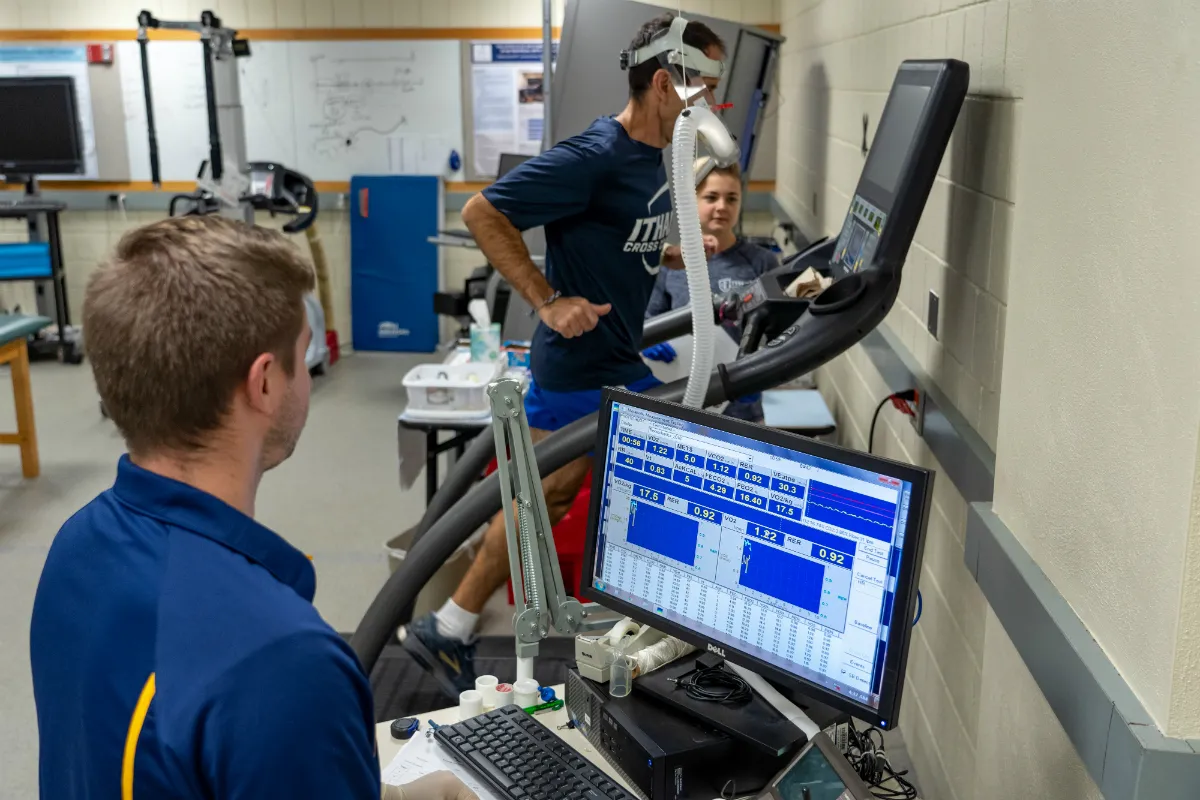When American marathoner Allie Kieffer crossed the finish line at the 2018 New York City Marathon on Nov. 4, securing her second consecutive top-10 finish in the famed road race, she showed that her distinctive training methods — emphasizing strength training in a sport dominated by rail-thin athletes — could pay off against the world’s best distance runners. A timely new study conducted at Ithaca College aims to demonstrate why hitting the weights like Kieffer can make a difference for endurance athletes.
The study is led by Dave Diggin, an assistant professor in the Department of Exercise and Sport Sciences at the college’s School of Health Sciences and Human Performance. According to Diggin, existing research shows that strength training improves athletes’ running economy, meaning they use energy more efficiently, but little research shows why that occurs. Figuring that out could allow trainers to develop strength-training plans better tailored to the needs of distance runners. It could also help convince more endurance athletes of the benefits of strength training, which some runners still think might slow them down by causing weight gain.
“There are going to be benefits to doing strength work,” said Diggin. “We’re trying to provide the reason why, so that athletes become a little bit clearer on what’s happening behind the scenes and how to go about it.”
A group of 15 runners began participating in the first round of the study in September. After some baseline testing, half of the runners continued their normal training, while the other half began a strength-training regimen in the college’s Robert R. Colbert Sr. Wellness Clinic. The training emphasizes lower limb stability, hip strength and lower body strength, incorporating exercises like split squats and Romanian dead lifts. Participants are guided through the training by exercise science students Maddie McElfresh ’19 and Mark Rotondi, M.S. ’22, a certified strength and conditioning specialist.
After 10 weeks, Diggin and his students administer more testing to see what’s changed. One of the tests measures the spring-like capabilities of runners’ legs to see whether they’re becoming more elastic. Another, known as a GXT test, puts runners on a treadmill to measure how efficiently their bodies use oxygen. Blood samples are also taken to test runners’ lactate thresholds.
In addition to providing data for the study, the testing also gives the athletes themselves valuable information to benefit their running. “A big part of what the athletes want when they come in is their training zones, which are unique and specific to them, so that it takes the guesswork out of their training,” he said.
Many of the athletes completing the strength-training plan have already reported improvements in their running, such as faster times in speed workouts.
“It’s important to show distance athletes that they really should strength train and get rid of the stigma that strength training might hinder their performance,” said McElfresh.
Diggin hopes to work with a second group of runners in the spring before analyzing the data and reporting the results of the study.
